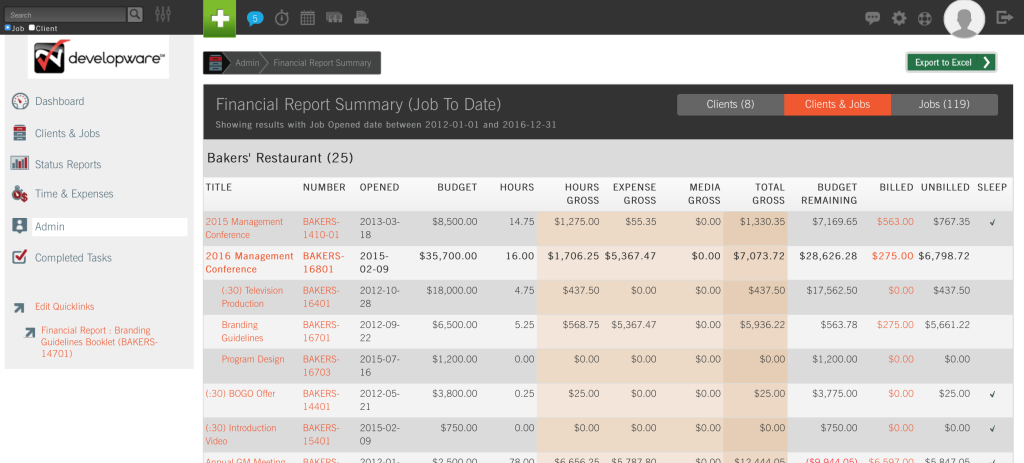Financial Report Summary
CONVENTIONS
QuickTIPs (and Links) are highlighted in blue.
Permission-based items are highlighted in red.
System navigation is italicized.
FINANCIAL REPORT SUMMARY
The Financial Report Summary can be used by Accounting, Account Executives, Traffic Managers, and principals alike to monitor the Budgets of their Clients’ jobs (both Active and Sleeping) versus their incurred expenses (i.e. time, mileage, ) as recorded within CurrentTrack® for a given year.
To view a Financial Report Summary, go to Admin — Agency Administration — Create Financial Report Summary.
Enter a dare range for the Summary. Next, choose either a single Client or All Clients from the drop-down menu, along with a Job and/or Media Type(s). Choose the type of job from the Status drop-down menu — All, Active or Sleeping. Lastly, indicate the Report Type you prefer to see — Job to Date or Date Range; click Submit.
On the results screen, you’ll see three toggle buttons — Clients, Clients & Jobs and Jobs — which enable you to view the data multiple ways. On all views, clicking on a Job Title link will take you to its Workback Schedule while the corresponding Number link will display its Financial Report. The Billed link will take you to the job’s overall Billing History.
TIP: Enter a Budget figure at the time a job is opened. If unknown, try preparing a Production Estimate and then entering its Total in the Budget field. That way, you’ll at least have a general idea of where your time and expenses fall. You can always go back and edit the Budget once the final figure is known.
To view a Printer Friendly version of the Financial Report Summary, click on the printer icon located at the top of the page. To export the contents of the Summary, click Export to Excel. The file, in .xls format, will automatically download to your desktop.
TIP: Print a Financial Report Summary for all of your Active jobs and take it along to your weekly production meeting. You’ll quickly be able to tell your team members where their jobs stand financially.



